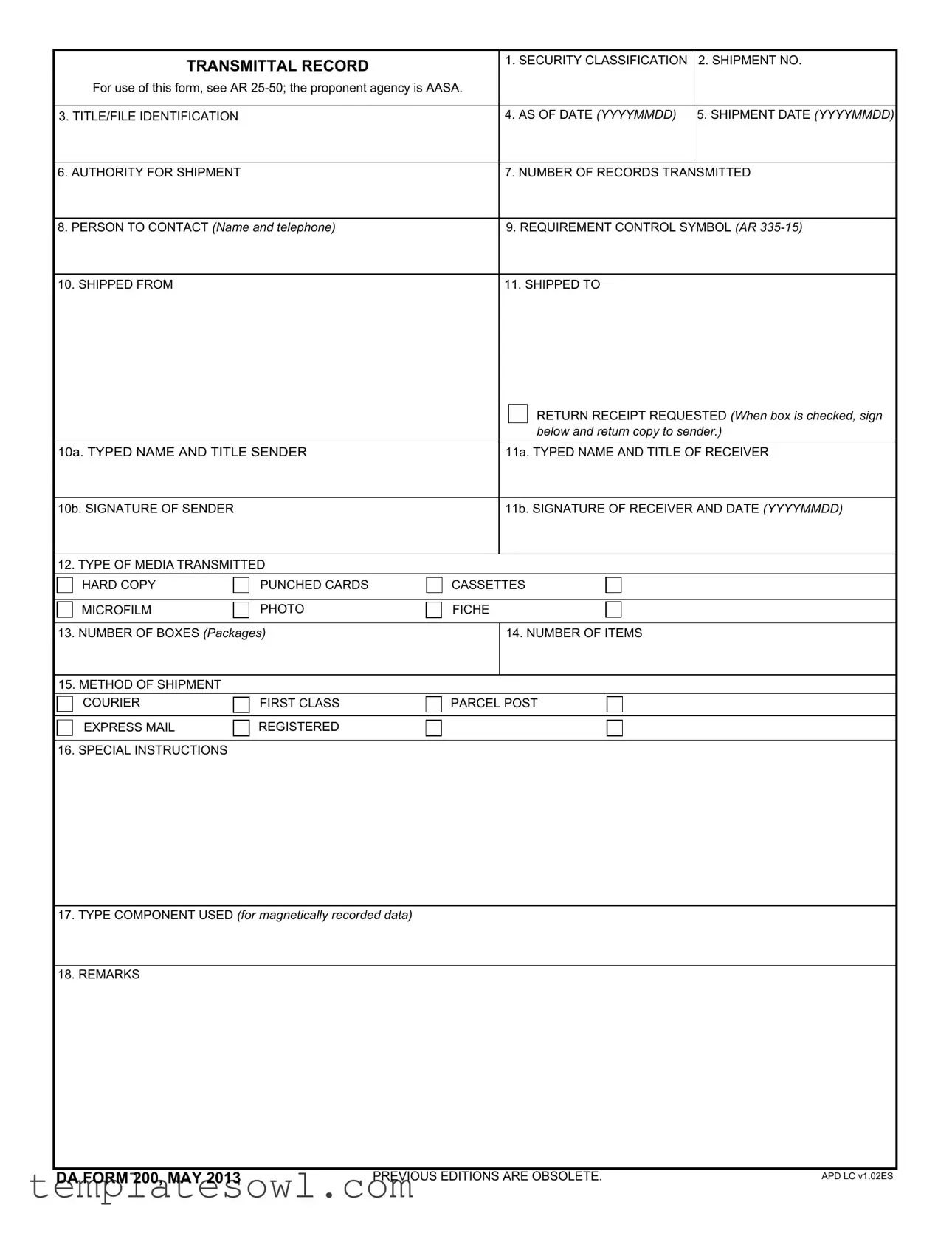Completing the DA Form 200, also known as the Transmittal Record, can be straightforward, but mistakes are common. One of the most frequent errors is failing to correctly fill out the security classification. If this section is left blank or completed inaccurately, it can lead to serious implications for the handling of sensitive information. Proper classification controls who can access the shipped documents.
Another common issue is with the shipment number. Misplacing or omitting this crucial information can cause confusion. Recipients might struggle to track the shipment, and it could delay administrative processing. Always double-check this section to ensure the number is correctly entered.
Many people neglect to update the "As of Date." This date reflects the latest version of the records being shipped. If this details missing or incorrect, it can result in the recipient using outdated information, compromising their workflow.
One critical mistake occurs when individuals do not specify the "Authority for Shipment." Without this, the shipment lacks valid approval, which is essential for audit purposes. It’s crucial to include this information to avoid any misunderstandings about the legitimacy of the shipment.
Some also overlook the necessity for contact information. The "Person to Contact" section should be filled with a name and telephone number. If questions arise during the shipment’s journey, having a point of contact can expedite resolution.
Furthermore, entrants often miscalculate the number of records transmitted. This simple mistake could lead to discrepancies. If the number does not match the actual content of the shipment, it may raise concerns about missing documents or miscommunication.
When it comes to signature requirements, mistakes frequently occur here as well. The sender's and receiver's signatures must be in place to authenticate the transaction. Omitting one or both can render the form invalid, which can complicate any follow-up actions regarding the shipment.
Lastly, the type of media transmitted is sometimes inaccurately filled out. This section is vital for the recipient to know how to handle the documents properly. Without the correct specification—be it hard copy, punched cards, or microfilm—the recipient might not have the appropriate resources to process the shipment efficiently.

